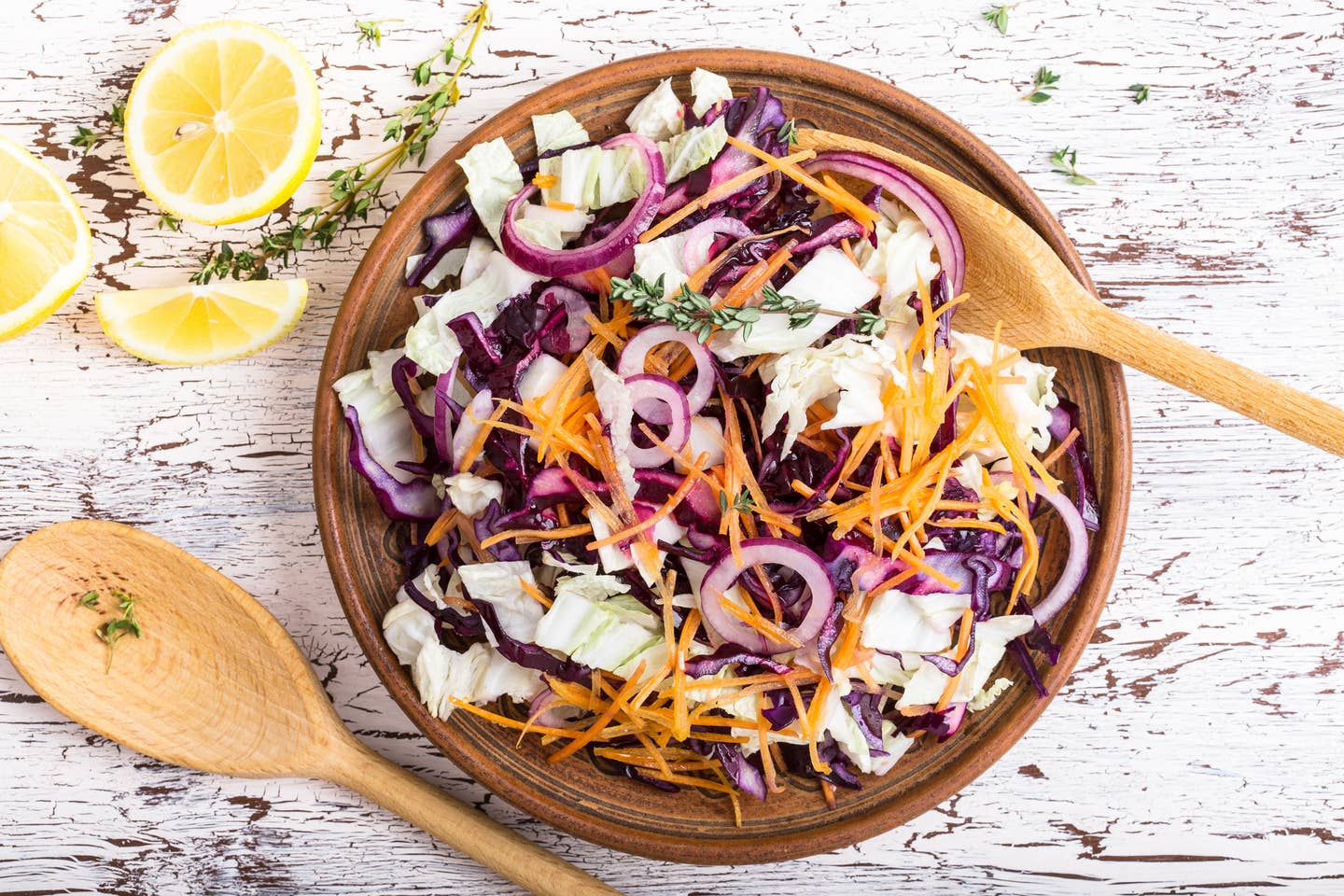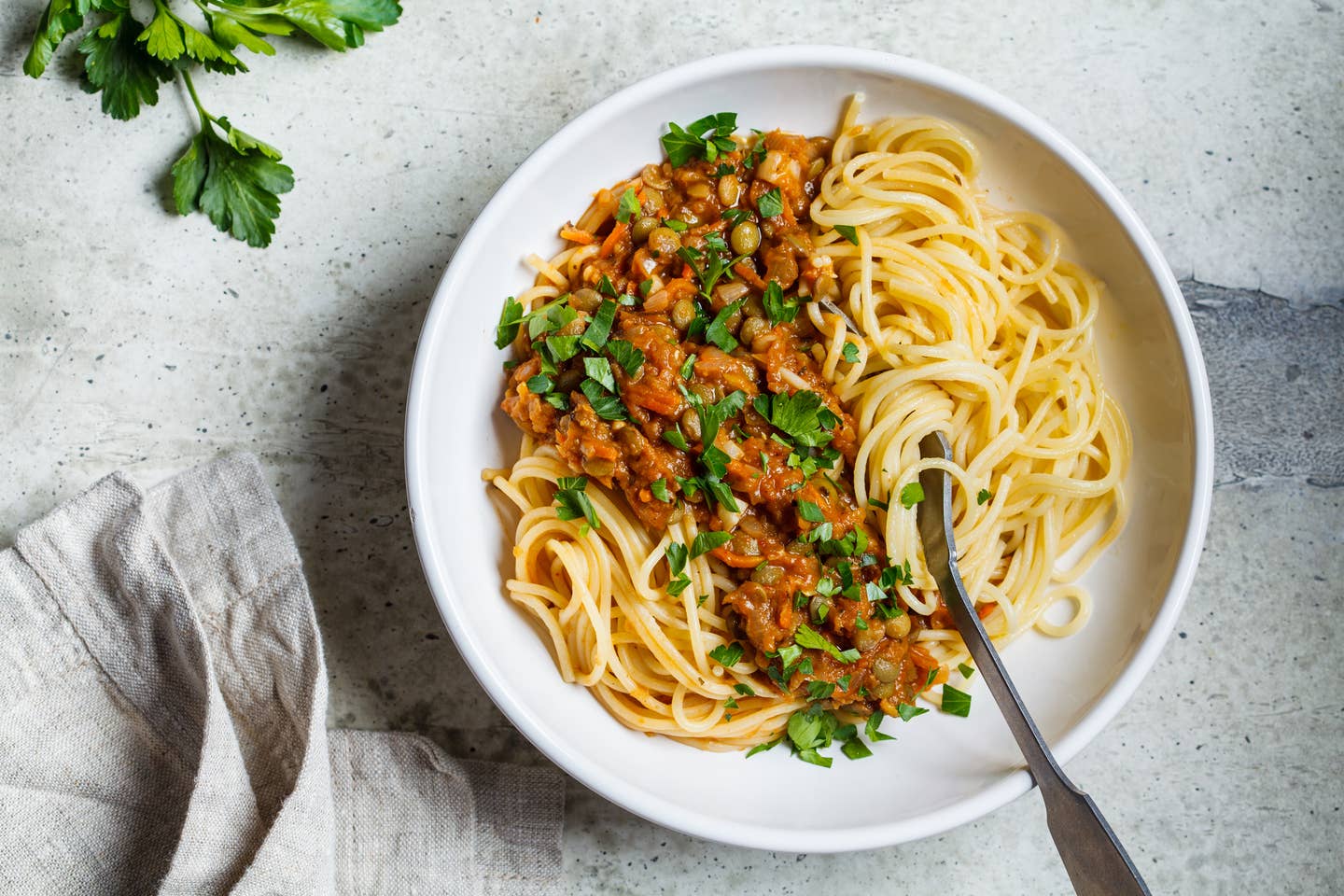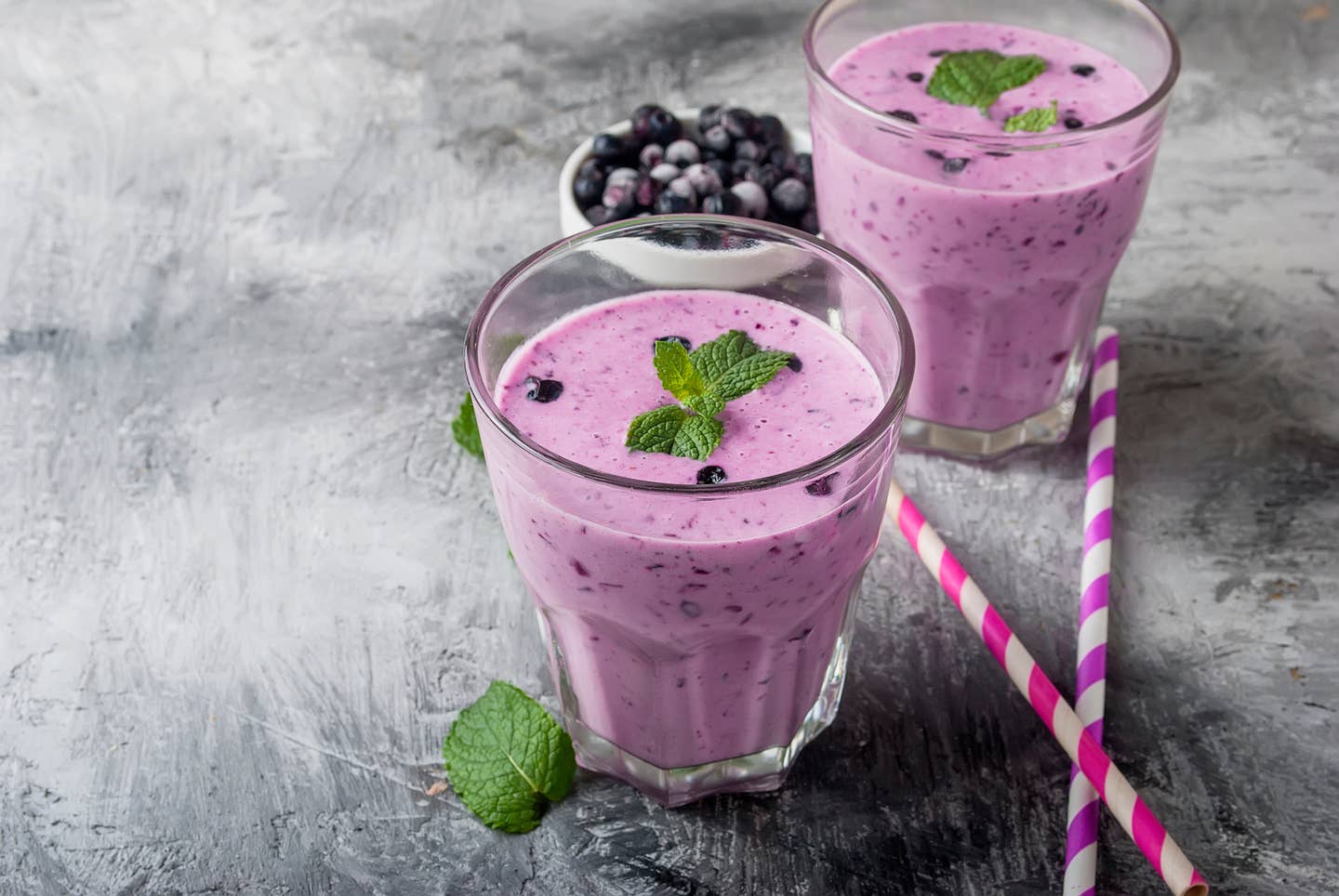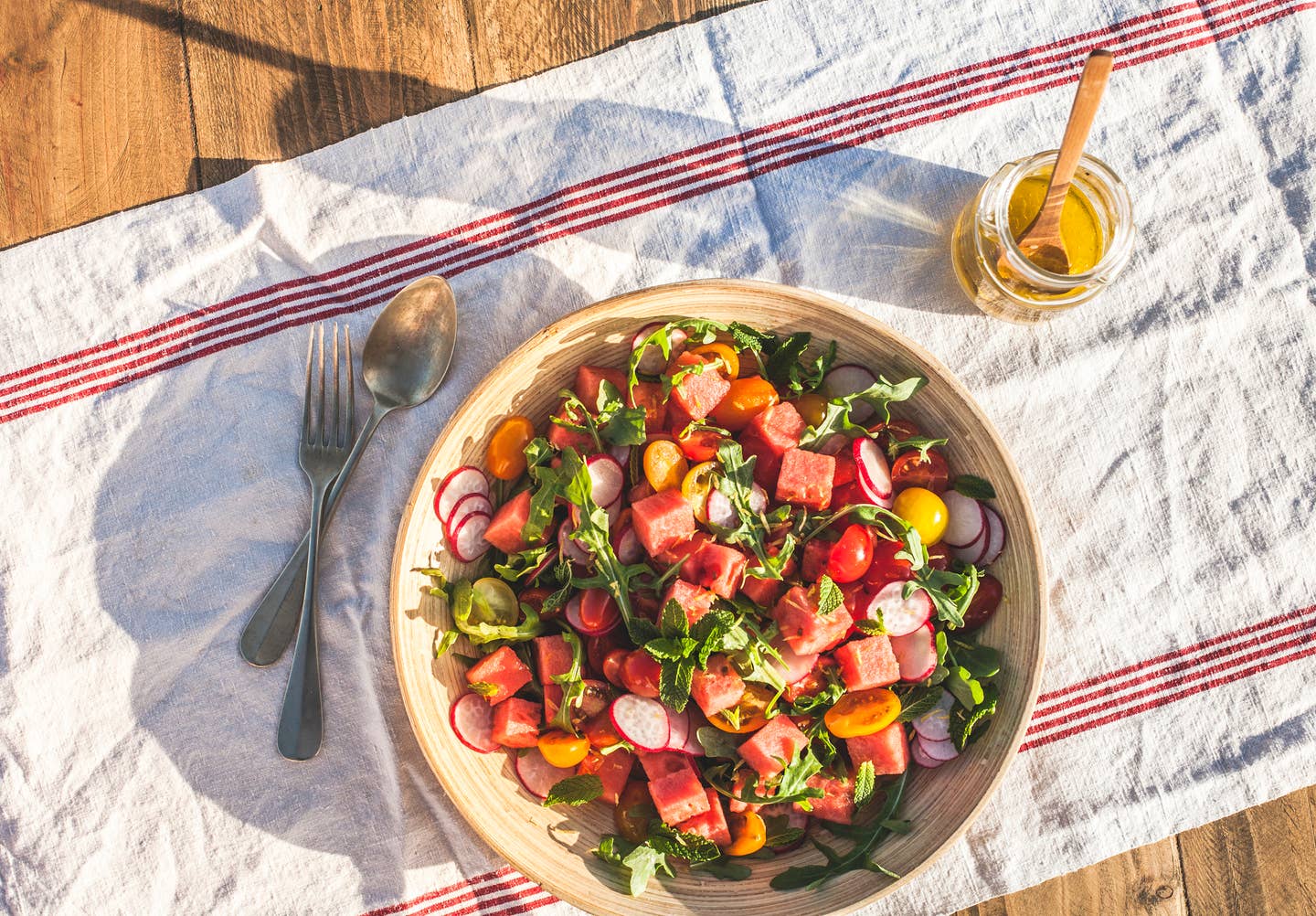
Your 7 Day Beginner’s Guide to Going Plant-Based
If you've ever thought about going plant-based or trying out a meat-free diet, now is the perfect time to start. Sign up for 7 days of amazing, delicious recipes, expert advice, and easy tips to stay on track. Here's everything you need to get started!
Sign up to get you everything you need to succeed:
- Expert Advice
- Motivating Tips
- Shopping Lists
- Helpful "what-to-watch" guides
- 5 recipes a day: Breakfast, Lunch, Snack, Dinner, and Dessert.
Sign-Up for the Beginner's Guide to Plant-Based Eating
Following a mostly plant-based diet is great for us: Eating a mostly plant-based diet is known to reduce the chances of heart disease, some cancers, and pretty much every disease you've ever heard of—and reduce mortality from any cause by more than 25 percent. Going plant-based can help you lose weight, boost your metabolism, enjoy clear skin and get fitter faster.
But the other reason to try a plant-based approach now is for the sake of the planet. The coronavirus outbreak reminds us that how we choose to eat has far-reaching effects on our climate.
So If you're ready to go and just don't know where to start, this guide is for you. Sign up here and get your 7 days of healthy plant-based recipes in your inbox each morning. See the kinds of food you'll get to eat in the sample recipes below.
Get 7 Days of Easy, Delicious Vegan Recipes:
You'll find daily recipes from one of our favorite vegan recipe creators who is an influencer and expert in her own right. Hannah Sunderani created these recipes and generously shared them with The Beet. For her entire collection and her thoughts on being vegan check out her blog, TwoSpoons, which is both inspiring and a little intimidating since she has this lifestyle down!
Want to try this one-week Beginner's Guide with a friend? Share this link and you can both be cooking vegan meals together, starting tomorrow morning! Good luck and let us know how it goes!
Eager to Get Started? Here's a Taste of What You'll Get if You Sign Up Today:
Breakfast: Coyo Peach Parfait
Why We Love It: This parfait is an easy and refreshing breakfast, made with creamy coconut yogurt, juice peaches and crunchy granola.
Lunch: Harvest Kale Caesar Salad
Why We Love It: Caesar salad is truly a staple side. It’s one that I always make when hosting friends for dinner. It really has its place for all types of people. For my health-conscious girlfriends who love their greens, there is no word that makes our ears perk up better than “KALE!” But also, it pleases those non-salad fans who will only touch the stuff when it’s doused in a creamy caesar dressing. Two become one with this wonder good Harvest Kale Caesar Salad.
Dinner: Meatless Meatballs
Why We Love It: These Eggplant and Lentil Vegan Meatballs are everything we could hope for in a non-meatball. They are full of flavor with a meat-like texture.
Top 10 Sources of Plant-Based Protein According to a Nutritionist
1. Seitan
Protein: 21 grams in ⅓ cup (1 ounce) Seitan isn’t as popular as other proteins, but it should be! Made from wheat gluten, its texture resembles ground meat. It’s often used in pre-made veggie burgers or meatless nuggets. Seitan has a savory taste, like mushrooms or chicken, so it works well in dishes that call for an umami flavor. With a hearty texture, seitan can be the star of practically any vegan main dish. Add it to stir-fries, sandwiches, burritos, burgers, or stews. Like tofu, seitan will take on the flavor of any marinade or sauce.
2. Tempeh
Protein: 16 grams in 3 ounces If you like a protein with a bit of bite, add tempeh to your list. Made from fermented soybeans, tempeh has a slightly nutty flavor and is pressed into a block. Most varieties include some sort of grains, such as barley or millet. Not only is tempeh a plant-based source of protein, but the fermentation process also creates good-for-your-gut probiotics. You can cut tempeh right off the block and use it as the base for a sandwich or pan-fry it with some sauce. Or, crumble, heat, and make it the star of your next taco night.
3. Lentils
Protein: 13 grams in ½ cup cooked Lentils come in multiple varieties--red, yellow, green, brown, black. Regardless of the type lentils are small but mighty nutritional powerhouses. They pack a good amount of protein as well as iron, folate, and fiber. When cooked, brown lentils retain their texture and can be the base for a grain bowl or make a hearty substitute for ground meat in meatballs, lasagna, tacos or Bolognese. Red lentils are a bit softer and make a nice add-in for a hearty soup, chili, or stew.
4. Hemp Seeds
Protein: 10 grams in 3 tablespoons Hemp seeds are a tender and nutty seed, derived from the hemp plant. They contain good amounts of omega-3s, iron, folate, magnesium, phosphorus, and manganese. They are also a solid source of both soluble and insoluble fiber, which helps to keep your digestive tract healthy and humming. Because they pack a double whammy of protein and healthy fats, hemp seeds can help satisfy hunger, preventing those embarrassing stomach growls as you slog your way to your lunch break. Add them to your morning smoothie or sprinkle them on top of yogurt, oatmeal, or even a salad.
5. Tofu
Protein: 9 grams in 3 ounces (⅕ of a block) Made from coagulated soybeans, tofu is the most popular plant-based protein. Soy is one of the only meatless "complete" proteins, meaning that it contains all of the essential amino acids that the body can’t make but needs for muscle and immune function. With 15% of your daily calcium needs, tofu is also a good replacement for dairy.
6. Edamame
Protein: 9 grams of protein in ½ cup This sushi appetizer is a nutrient powerhouse, so eat it anytime. Edamame is really just another name for soybeans in their pods. Let’s list off some stats--a small ½-cup serving of edamame has 9 grams of protein, 15% of your daily vitamin C, 10% of your daily iron and 16% of your daily fiber. Keep a bag of edamame in your freezer to serve as a fun-to-eat side dish or opt for the shelled variety to toss into salads or a grain bowl.
7. Quinoa
Protein: 8 grams per cup (cooked) Quinoa is an ancient grain and since it's gluten-free a great choice for anyone avoiding gluten. Add it to your burger recipe to create filling texture, or instead of meat in your taco or burrito. Quinoa is among the healthiest foods on the planet, delivering phytonutrients that have anti-inflammatory qualities, so keep it in your pantry for any meal that needs a filling grain. Just remember to soak it and rinse before cooking to get rid of any bitter taste.
8. Black Beans
Protein: 7 grams in ½ cup (canned) Eating beans on the regular might as well be a prerequisite for a plant-based diet. Not only are canned black beans inexpensive, but they also contribute 10% of your daily iron and 25% of your daily fiber to your diet. For less than $1 a can, beans can be the star of tacos, quesadillas, salads, soups, burgers, or dips.
9. Amaranth
Protein: 6 grams in ⅔ cup (cooked) Chances are you’ve never cooked amaranth. But you should, since this tiny, gluten- free grain is packed with almost 30% of your daily fiber and 20% of your daily iron. Cook it like a traditional grain to yield a soft, porridge-like texture. Many people add amaranth to other a hot breakfast cereal mixture, like oats and quinoa. It also pops like popcorn. Toss it in a pot with some oil and wait for it to pop up into a nutritious snack.
10. Peas
Protein: 5 grams in ⅔ cup If peas were one of your most hated veggies as a kid, it’s time to give them another chance. These green beans are a great low-calorie protein to keep in your freezer. Sure, they don’t always taste great when steamed or microwaved (who wants to eat mushy, overcooked peas?), but they do blend well into a yummy puree that can be slathered on toast. To amp up the flavor, add some lemon juice or mint to your mix before you blend.




